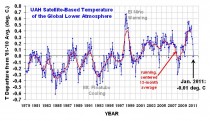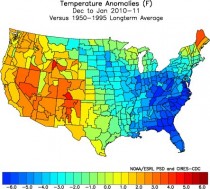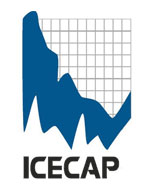We posted many stories explaining why the California masochistic policies were bit unnecessary and unwise but many downsides (unemployment, exported jobs, higher energy and other costs) and no discernible upside. It took an extremist enviro coalition appropriately called CRAP to put a halt to the bad deal because in their mind it was too corporation friendly.
By Adam Sparks
Thanks to Ronald Reagan’s legacy and a legal miscalculation by leftist environmentalists, this week a California judge stopped the implementation of California’s Cap and Trade law: better known as Cap and Tax. This is the same type of carbon trading that Al Gore has hawked for years, but failed to get through the most radical Democrat Congress in generations. That’s how bad it was. Of course, that didn’t stop whacked out California from passing a Draconian version of the same job killing scheme.
To add insult to injury, the so called “republican” Governor Schwarzenegger signed the bill into law in 2006. It was opposed by the Chamber of Commerce and most sane taxpayers (admittedly, CA doesn’t have enough of those). The opponents claimed that the law would drive out business to other states and dramatically increase the cost of energy. Energy costs would, of course, be passed on, driving up the cost of everything else-in the midst of the nation’s worst recession.
The voters of California even had an opportunity last year to put the brakes on it at the ballot box with Proposition 23, but the environmental left spent millions fighting the proposition. It wouldn’t even have scrapped the whole law, but only would have suspended the Cap and Tax until state unemployment dropped below 5.5% for four consecutive quarters. The proposition was defeated overwhelmingly. Considering our unemployment rate is well over 12% here, the California voters essentially supported assisted economic-suicide of their own state.
It took two forces working together to finally defeat Cap and Tax: a group of radical Lefties and Ronald Reagan to put the brakes on this law.
A challenge to the law, based on other environmental laws, specifically CEQA, (the California Environmental Quality Act), finally prompted a judge to halt the law’s implementation. CEQA says that legislation that has an impact on the economy or the environment has to be analyzed for less destructive alternatives. Such an analysis was not adequately done according to the judge. CEQA was signed by then Governor Ronald Reagan. (May he rest in peace.)
Ironically, the group that brought the legal challenge to the law was not the coalition of businesses that would be directly affected. It was a group of racist, enviro-whackos calling themselves, the Center on Race, Poverty and the Environment, abbreviated CRAP. This group claims to defend minorities from the ravages of the environment. The reason that CRAP filed the lawsuit is that they thought the legislation was too business friendly!
The judges ruling is now an opening for the business community to permanently defeat this law. The California Air Resources Board, one of the state’s largest and most unaccountable agencies has to now study and find alternative solutions to reducing green house gases.
Here’s an idea for the Resources Board: how about if California just continue on with its other destructive economic policies? Policies like: spending taxes it doesn’t have, treasury-busting unfunded pensions, high corporate and individual taxes, promoting the trial lawyer paradise and all the other anti-business regulations? Then you’ll be on track for carbon emissions like you’ve had before the industrial revolution-without the need for the complex Cap and Tax.
See post.
By Dr. Anthony Lupo
As the evidence continues to mount against climate alarmists, their statements continue to become more outrageous. Those like Dr. John Holdren now call for the education of skeptical scientists [1] as if skepticism about human induced climate change equates with a lack of understanding about the climate change problem. Then, when former Vice President Al Gore [2] was challenged about the cold and snow gripping much of the United States, he explains how science has always held out that human induced climate change is leading to more snow. This is a new wrinkle in the climate change debate as many press releases from alarmists during the past ten years discussed how snow might become a thing of the past.
But could it be that the alarmists are the ones who need education about how the climate system works? Low pressures, like the one that brought record snows from the southern plains states to the Chicago area (February 1-2, 2011), draw their energy primarily from the strength of the equator-to-pole temperature differences. They are also driven by the stability of the atmosphere, or how quickly temperatures decrease with height. Finally, another key ingredient can be the addition of copious amounts of moisture. However, the moisture will not make storms stronger without the contributions of the other two processes.
Global warming alarmists continually argue that the warming is happening fastest in the arctic regions and that an upper tropospheric warming would be a key signature of human induced climate change [3]. Both of these factors would act to reduce the strength of storms, and also result in a jet stream that tends to be less “active” and with less robust waves.
Early last fall, it became apparent that the eastern United States would have a colder than normal winter [4]. The previous year’s El Nino had waned and La Nina was setting in during the early fall. Additionally, sea surface temperatures in the Northern Pacific were getting warmer. Both of these scenarios favor the occurrence of more winter season blocking [5] in the Pacific Sector. Blocking is a large-scale, mid-latitude, persistent ridging in the jet-stream which “blocks” the regular progression of storms [5]. Blocking in the Pacific is usually associated with cool weather in the central and eastern USA [6].The deepening La Nina has brought global temperatures down during December 2010 and January 2011 [7] (Fig. 1).
For the second straight year, snow is piling up across much of the country including the Missouri region. In our area, the recent storm was the second greatest snow producer in at least the last 60 years. For Columbia in central Missouri, the winter of 2010-2011 has produced already the 6th greatest winter seasonal snow total since 1890. And February has just begun. The snow totals here have been noteworthy in other ways as January 2011 was the 9th snowiest on record, February 2011 is already the 4th snowiest. This winter season is only the third one since 1949 to produce three events of 6-or-more inches at our location.
While snow has assaulted the record books in Missouri as well as nationwide, the cold temperatures have yet to become a big story. The winter temperatures in our region are on pace to be colder than last year, which was our 15th coldest on record (since 1890), and this year’s winter would rank at 10th if February does not change the winter average appreciably. So far February has been off to a cold start, and the narrative has been the same elsewhere.
None of these things are consistent with what we would expect in a warmer world as the alarmists see it [3], regardless of how they spin it [2].

Figure 1. The global temperature anomalies based on satellite measurements from the University of Alabama Huntsville. The abscissa shows years since 1979 and the ordinate is temperature anomalies in degrees centigrade. Adapted from [7].
[1] Holdren on Skeptics in the Blaze Posted: January 31, 2011.
[2] Al Gore: An Answer for Bill Posted: February 1, 2011
[3] Climate Change 2007: The Science of Basis, Contributions of Working Group I to the Fourth Assessment Report of the Intergovernmental Panel on Climate Change. Edited by: S. Solomon, D. Qin, M. Manning, M. Marquis, K. Averyt, M.M.B. Tignor, H.L. Miller, Jr., and Z. Chen. Cambridge University Press, Cambridge, UK. 996 pp. ISBN: 978 0521-70596-7
[4] See Our Long Range Forecast link.
[5] Wiedenmann, J.M., A.R. Lupo, I.I. Mokhov, and E. Tikhonova, 2002: The climatology of blocking anticyclones for the Northern and Southern Hemisphere: Block intensity as a diagnostic. Journal of Climate, 15, 3459-3473
[6] Lupo, A.R., E. P. Kelsey, D.K. Weitlich, N.A. Davis, and P.S. Market, 2008: Using the monthly classification of global SSTs and 500 hPa height anomalies to predict temperature and precipitation regimes one to two seasons in advance for the mid-Mississippi region. National Weather Digest, 32:1, 11-33.
[7] Spencer, R, 2011: Global temperatures in Freefall
Icecap Note: Here is the December 2010 - January 2011 anomaly of temperatures for the United States (NOAA CDC). Enlarged.

By Roger Pielke Sr.
There is an article in The Hill’s Energy and Environment Blog on February 1 2011 by Andrew Restuccia titled [h/t/ Bob Ferguson]
Scientists ask Congress to put aside politics, take ‘fresh look’ at climate data

The news article starts with the text
More than a dozen scientists took aim at climate skeptics in a letter to members of Congress late last week, calling on lawmakers to put aside politics and focus on the science behind climate change.
In the Jan. 28 letter, 18 scientists from various universities and research centers called on lawmakers to take a “fresh look” at climate change.
“Political philosophy has a legitimate role in policy debates, but not in the underlying climate science,” the scientists said in the letter. “There are no Democratic or Republican carbon dioxide molecules; they are all invisible and they all trap heat.”
Other excerpts from the news article read [with my comments right below each excerpt]
“The scientists took aim at climate skeptics. “Climate change deniers cloak themselves in scientific language, selectively critiquing aspects of mainstream climate science,” the scientists said. “Sometimes they present alternative hypotheses as an explanation of a particular point, as if the body of evidence were a house of cards standing or falling on one detail; but the edifice of climate science instead rests on a concrete foundation.”
My Comment
Actually, the focus almost exclusively on the radiative effect of CO2 and a few other greenhouse gases is a house of cards. As we documented in our paper (in which each author is a Fellow of the American Geophysical Union)
Pielke Sr., R., K. Beven, G. Brasseur, J. Calvert, M. Chahine, R. Dickerson, D. Entekhabi, E. Foufoula-Georgiou, H. Gupta, V. Gupta, W. Krajewski, E. Philip Krider, W. K.M. Lau, J. McDonnell, W. Rossow, J. Schaake, J. Smith, S. Sorooshian, and E. Wood, 2009: Climate change: The need to consider human forcings besides greenhouse gases. Eos, Vol. 90, No. 45, 10 November 2009, 413. Copyright (2009) American Geophysical Union
“In addition to greenhouse gas emissions, other first-order human climate forcings are important to understanding the future behavior of Earth’s climate. These forcings are spatially heterogeneous and include the effect of aerosols on clouds and associated precipitation [e.g., Rosenfeld et al., 2008], the influence of aerosol deposition (e.g., black carbon (soot) [Flanner et al. 2007] and reactive nitrogen [Galloway et al., 2004]), and the role of changes in land use/land cover [e.g., Takata et al., 2009]. Among their effects is their role in altering atmospheric and ocean circulation features away from what they would be in the natural climate system [NRC, 2005]. As with CO2, the lengths of time that they affect the climate are estimated to be on multidecadal time scales and longer.
Therefore, the cost-benefit analyses regarding the mitigation of CO2 and other greenhouse gases need to be considered along with the other human climate forcings in a broader environmental context, as well as with respect to their role in the climate system.”
and
“The evidence predominantly suggests that humans are significantly altering the global environment, and thus climate, in a variety of diverse ways beyond the effects of human emissions of greenhouse gases, including CO2...Because global climate models do not accurately simulate (or even include) several of these other first-order human climate forcings, policy makers must be made aware of the inability of the current generation of models to accurately forecast regional climate risks to resources on multidecadal time scales.”
The failure of this group of climate scientists to consider this broader perspective illustrates their inappropriately narrow view of climate including the role of humans in affecting it, as well as of other social and environmental threats as discussed in the weblog post
A Way Forward In Climate Science Based On A Bottom-Up Resource-Based Perspective.
Roger has much more in his evaluation of the letter from the ‘scientists’.
Summary
The authors of this letter to Congress clearly are advocates for particular policy actions based on their (in my view) inaccurately narrow view of the role of humans within the climate system. They are trying to claim they are only focusing on the science issues, but even a casual examination of their letter shows they are advocates.
Icecap note: Roger has much more in his evaluation of the letter from the ‘scientists’. Please note the hill will be hearing from scientists who don’t have a vested interest in keep their grant funding or reputation or advancing their ideology at any cost, including abandoning the truth.


